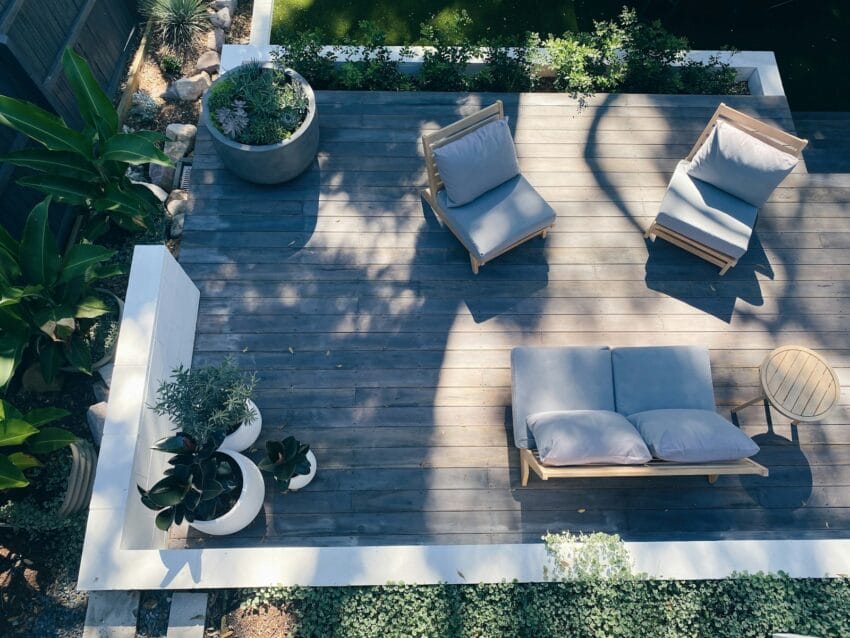In the reality of landscaping, the aspiration to cultivate a captivating outdoor space that maintains its allure throughout the seasons is a timeless pursuit. The key to achieving such enduring beauty lies not only in careful planning and design but also in a deep understanding of the natural rhythms and nuances of each season.
In this comprehensive guide, we’ll uncover expert insights and practical tips to help you unlock the secrets of seasonal splendor in your landscape, ensuring its charm persists year-round.

Understanding the Seasons
Before delving into the intricate details of landscaping for year-round beauty, it’s crucial to understand the unique attributes and obstacles presented by each season. From the lively bursts of spring blossoms to the rich hues of autumn foliage and the tranquil allure of winter’s snow-covered landscapes, every season introduces its own distinct array of colors and textures.
This diversity provides an opportunity to create dynamic and visually captivating outdoor spaces. Including Sacramento landscaping in your plans adds an additional layer of complexity, taking into account the local climate, soil conditions, and native plant species if you’re in the area.
By comprehending these seasonal fluctuations and regional nuances, you can strategically tailor your landscaping endeavors to enhance the beauty and functionality of your outdoor environment throughout the year.

Strategic Plant Selection
Central to creating a landscape that flourishes throughout the year is the thoughtful selection of plant species. This process involves considering various factors, such as the climate, soil conditions, and specific requirements of each plant.
By incorporating a diverse mix of evergreen shrubs and trees, you can provide structure and visual interest that remain consistent across seasons. Additionally, including flowering perennials and annuals that bloom sequentially ensures a continuous display of color and adds vibrancy to your outdoor space.
It’s essential to choose plants that are well-suited to your local climate and soil conditions, as they will be more resilient and require less maintenance over time. Paying special attention to their seasonal requirements for watering, pruning, and general care will help ensure their health and longevity, contributing to the overall success of your landscape design.

Designing for Seasonal Interest
Designing a landscape with year-round beauty in mind involves much more than simply selecting plants. It’s about crafting dynamic compositions that evolve and thrive with the shifting seasons.
To achieve this, integrate a variety of elements into your design. Ornamental grasses, for example, add movement and texture to the landscape, offering interest even during the colder months when many plants are dormant. Deciduous trees are another essential component, providing seasonal variation through their changing foliage and adding depth to the overall composition.
In addition to plants, consider incorporating hardscape features such as patios, pathways, and retaining walls. These elements not only provide practical functionality but also contribute to the overall aesthetic appeal of the garden.
They create structure and delineate different areas, adding visual interest even when plantings are not in bloom. By thoughtfully integrating both softscape and hardscape elements, you can create a landscape that remains visually engaging and inviting throughout the year.
Harnessing the Power of Color
Strategic use of color plays a pivotal role in ensuring your landscape maintains its visual allure across all seasons. It’s essential to experiment with plants that offer a diverse range of hues, from the lively blossoms of summer to the deep, earthy tones of autumn and the softer, more subdued shades of winter. By incorporating a variety of colors throughout your garden, you can create captivating compositions that evolve with the changing seasons.
Consider employing complementary color schemes to further enhance the beauty of your landscape. By pairing colors that lie opposite each other on the color wheel, you can create harmonious arrangements that draw the eye and evoke a sense of balance and tranquility.
Whether it’s through the vibrant blooms of flowering plants, the changing foliage of trees and shrubs, or the subtle interplay of light and shadow, thoughtful consideration of color can elevate the visual appeal of your outdoor space year-round.
Seasonal Maintenance Practices
Maintaining a vibrant landscape throughout the year requires regular upkeep. Establishing a seasonal maintenance routine is essential to sustaining the health and beauty of your outdoor space.
This plan should include tasks such as pruning, mulching, and fertilizing to encourage plant growth and deter pests and diseases. By staying proactive with these maintenance efforts, you can ensure that your landscape remains lush and flourishing.
Furthermore, adapting your watering and irrigation practices to suit seasonal weather fluctuations is crucial. During dry spells, increase watering frequency to prevent dehydration, while reducing irrigation during cooler, wetter periods to avoid waterlogging.
By aligning your maintenance schedule with the changing seasons and weather patterns, you can optimize the health and resilience of your landscape, ensuring its longevity and attractiveness year-round.
Sustainable Landscaping Practices
Incorporating sustainable practices into your landscaping routine is not just about being environmentally conscious; it’s also about ensuring the long-term health and resilience of your outdoor space. By implementing eco-friendly strategies, you can reduce your environmental footprint while creating a healthier ecosystem for your plants and wildlife.
One sustainable practice to consider is installing rain barrels or cisterns to collect rainwater for irrigation purposes. This helps conserve water resources and reduces reliance on municipal water supplies, especially during dry periods. Additionally, opting for organic mulches and fertilizers provides natural nourishment to the soil, promoting healthier plant growth without the use of synthetic chemicals.
Another important aspect of sustainable landscaping is minimizing the use of chemical pesticides and herbicides. Instead, consider implementing integrated pest management (IPM) strategies that focus on prevention and biological control methods. This approach not only reduces harm to beneficial insects and wildlife but also fosters a more balanced and resilient ecosystem in your garden.
By adopting these sustainable practices, you can create a beautiful and thriving landscape that benefits both the environment and your enjoyment of outdoor spaces for years to come.
Final Thoughts
Finally, embrace the unique character of each season by incorporating seasonal decorations and accents into your landscape. From festive holiday displays to seasonal plantings and garden ornaments, infuse your outdoor space with elements that capture the spirit of the season and invite celebration and joy.
Achieving year-round beauty in your landscape requires a thoughtful combination of strategic planning, careful plant selection, and diligent maintenance practices. By embracing the principles outlined in this guide and harnessing the inherent beauty of each season, you can create a landscape that captivates the senses and delights the soul throughout the year.


